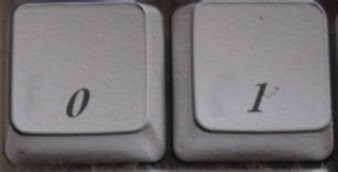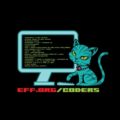
The latest development in computer hardware, the binary keyboard, will change the world of computing as we know it. Unlike a standard keyboard, which has at least 26 letters and 10 numerals, plus a handful of other special characters used for punctuation, math, and explicit language, the binary keyboard has only two keys: the numerals 1 and 0.
Those versed in computing can see how great the advantage is. Since a computer at its lowest level works in ones and zeros, that is, binary, the binary keyboard allows the user to speak the language of the computer. This is a huge advancement in programming. Programmers normally have to deal with higher-level languages like C, C++, C-Sharp, and C-Saw; as well as Java, JavaScript, Mocha-Java, and Java-the-Hutt. Now, however, they will be able to program completely in binary, freed from the constraints of syntax and human-readable code.
The binary keyboard was developed in the Koffman Laboratory at the Massachusetts Institute of Technology, after 4 years of testing all existing keyboard layouts on 600 chimpanzees. Dr. Kevin Koffman, along with three of his best PhD students, tested the chimpanzees for the speed at which they could write computer codes and the success of the codes they wrote. He gathered hundreds of pages of data from these tests and ran it through a sophisticated program which calculated that the fewer keys they had to choose from, the easier it was to get useful code. In the end, the data analysis program delivered the concept for the binary keyboard, which was a “eureka” moment for the professor. “There are few chances in a lifetime to see such beautiful results from statistical patterns,” stated Dr. Koffman. “But once I saw the output, I knew we had a breakthrough. It’s so simple, so elegant, yet so different from everything ever done before.” Tests confirmed that when the chimps were given just a 1 and a 0, they almost always wrote codes that the computer could read1.
Once the concept was revealed, it took another 6 years to form the final design. “After analysing the many choices for key layouts and the exact proportions of the keys, we built several prototypes using the latest 3-D printing technology,” says Dan Maloney, one of Dr. Koffman’s PhD students. “While we met some pitfalls along the way and some designs were a disaster, we finally created one that will work.”
Software designer Alexander Lavaterra, a beta-tester for the new keyboard, says he is thrilled with the binary keyboard. “It fits like a glove. Now I feel like I’m one with the computer,” Lavaterra said. Another user, Pablo Carson, a programmer for one of the largest software companies in the world, remarked, “I don’t know how I ever lived without it. For the first time, my programs mean what they say and say what they mean. This truly is one giant leap for computers.”
While the standard binary keyboard will have the 0 key on the left, there will also be a left-handed version with the 0 on the right, which should be available in one to two years. In addition, a version for hackers will include the * key for all passwords.
- Some of the codes written by the chimps became hit computer games for iPhone users ↩








